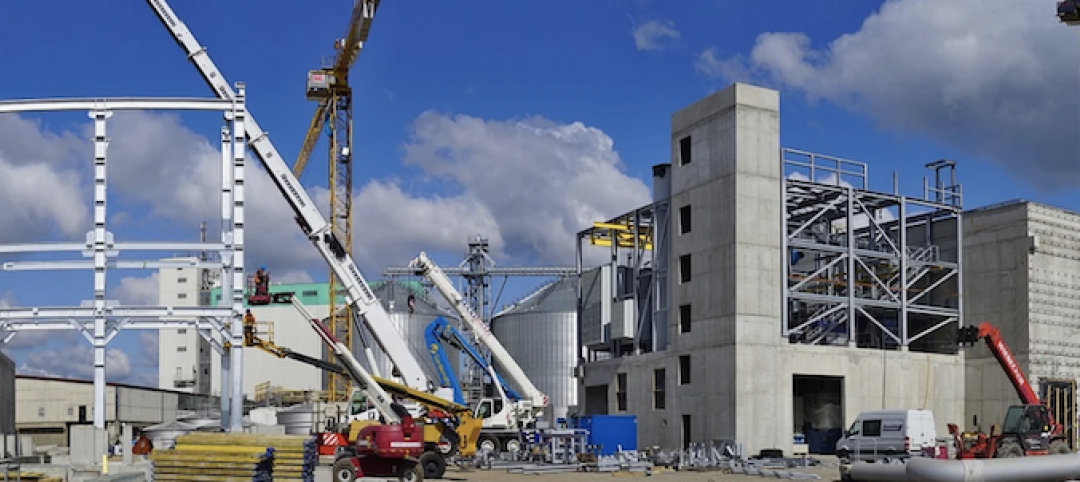Altus Group Limited (“Altus Group”) (TSX: AIF), a provider of software, data solutions and independent advisory services to the global commercial real estate industry, recently released the Altus Group Real Estate Development Trends Report, which provides an outlook of a global property development industry being hit by rapid change from disruptive market forces that did not exist a few years ago or have evolved substantially.
According to the report, which is based on a global survey of more than 400 property development executives, 68% said cost escalation is the biggest business challenge they are facing over the next five years. Several related factors account for this, which in combination are creating a ‘domino effect’ for developers:
- 34% of developers view cross-border trade policy as having a negative impact on the industry as uncertainty continues about future implications stemming from international tariffs and trade agreements
- 65% of developers are facing challenges with labour shortages, which are exacerbated by government policy and booming demand
- 60% of developers are concerned about the development approval process which is often complex and protracted
“It’s clear from the report that the global development sector is facing an increasingly complex set of challenges and rapid change, from escalating construction costs through to a sea-change in the development financing environment,” said Bob Courteau, Chief Executive Officer, Altus Group. “However, development leaders clearly see significant opportunities to manage risk and take advantage of changing conditions through a number of future-ready strategies including investments in technology and performance management along with consideration of new ways of managing and financing projects.”
When asked about the impact of emerging technologies on the property development industry, many respondents expressed a significant degree of uncertainty around some technologies that are experiencing successful application and adoption in other industries. Only a minority of respondents recognized a potential for major disruptive change with certain technologies:
- 3D printing – 65% see little to no impact / 16% anticipate major disruptive change
- Process automation – 56% see little to no impact / 22% anticipate major disruptive change
- Augmented reality/Virtual reality – 45% see little to no impact / 20% anticipate major disruptive change
Development industry leaders seem to have significant reservations about the potential impact of 3D printing, a rapidly evolving technology which is already being applied successfully to smaller scale development projects in countries such as China, Netherlands and USA.
Respondents, however, appeared to acknowledge the potential of more established technologies. Smart building technologies were regarded as the most disruptive, with 49% expecting major disruptive changes, and 42% anticipating a significant impact on efficiencies and how development is conducted.
Finally, the report also indicated a decade-on shift since the financial crisis in financing patterns, away from traditional and institutional lending, with 82% of respondents reporting they were utilizing at least one source of alternative financing while 46% are using traditional or institutional financing. Further, over 45% indicated they were considering, planning or utilizing some form of alternative financing exclusively.
This shift has coincided with a rapidly expanding range of financial options and sources coupled with a substantial increase in global capital inflow into real estate in recent years. Many alternative lenders and private funds have actively positioned themselves toward the space of traditional lenders, with investors increasingly seeing real estate as an income source as well as an opportunity for premium returns on the equity and joint venture structure side. In addition, there has been an increase and acceleration in the adoption and utilization of real estate joint ventures with 62% of development executives indicating they are considering entering into partnerships or joint ventures.
Related Stories
Market Data | Aug 10, 2020
5 must reads for the AEC industry today: August 10, 2020
Private student housing owners reap the benefits as campus housing de-densifies and race for COVID vaccine boosts real estate in life sciences hubs.
Market Data | Aug 7, 2020
6 must reads for the AEC industry today: August 7, 2020
BD+C's 2020 Color Trends Report and HMC releases COVID-19 Campus Reboot Guide for Prek-12 schools.
Market Data | Aug 6, 2020
6 must reads for the AEC industry today: August 6, 2020
Oklahoma State's new North Academic Building and can smart buildings outsmart coronavirus?
Market Data | Aug 5, 2020
6 must reads for the AEC industry today: August 5, 2020
San Jose's new tallest tower and Virginia is the first state to adopt COVID-19 worker safety rules.
Market Data | Aug 4, 2020
7 must reads for the AEC industry today: August 4, 2020
Construction spending decreases for fourth consecutive month and 100% affordable housing development breaks ground in Mountain View.
Market Data | Aug 3, 2020
Construction spending decreases for fourth consecutive month in June
Association officials warn further contraction is likely unless federal government enacts prompt, major investment in infrastructure as state and local governments face deficits.
Market Data | Aug 3, 2020
6 must reads for the AEC industry today: August 3, 2020
The future is a number game for retail and restaurants and 5 reasons universities are renovating student housing.
Market Data | Jul 31, 2020
5 must reads for the AEC industry today: July 31, 2020
Vegas's newest resort and casino is packed with contactless technology and Mariott, Hilton, and IHG dominate the U.S. hotel construction pipeline.
Market Data | Jul 30, 2020
Marriott, Hilton, and IHG continue to dominate the U.S. hotel construction pipeline at Q2’20 close
Hilton’s Home2 Suites and IHG’s Holiday Inn Express continue to be the most prominent brands in the U.S. pipeline.
Market Data | Jul 30, 2020
7 must reads for the AEC industry today: July 30, 2020
Millennium Tower finally has a fix and construction costs decrease for the first time in 10 years.

















